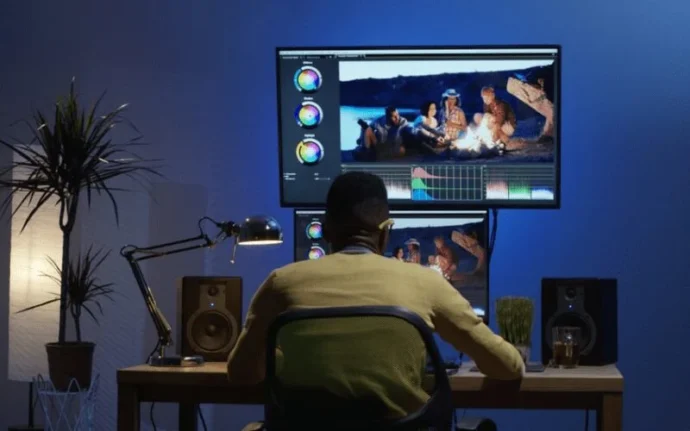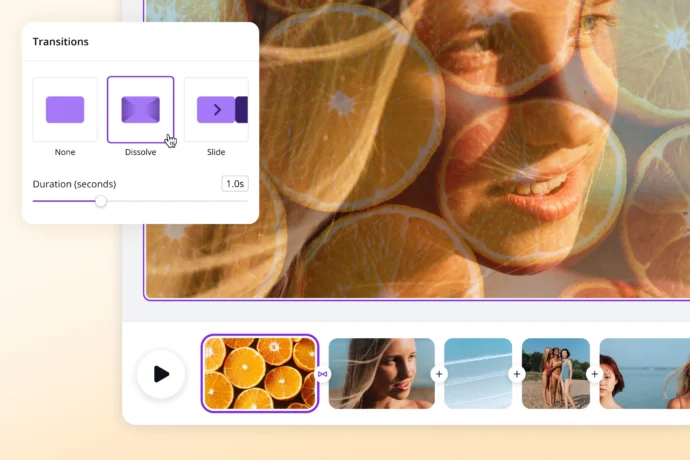In the realm of video editing, transitions are a critical component that can make a significant difference in the flow and cohesion of your videos.
They are a powerful tool that can enhance storytelling, guide the viewers’ attention, and provide a professional finish to your video projects.
Whether you’re using advanced software or a Free Online Video Editor, understanding transitions and knowing when and how to use them can elevate your video editing skills.
This comprehensive guide will take you on a journey to mastering the art of creating engaging transitions in your videos.
What Are Video Transitions?
In the simplest terms, video transitions are a method of merging two different scenes together. They create a seamless flow from one shot to the next, enhancing the overall coherence and continuity of the video.
Transitions can be as simple as a cut, where one scene instantly switches to another, or more complex like a cross dissolve, where one scene gradually fades into the next.
Why Are Transitions Important?

Transitions are an integral part of video editing, serving multiple important functions. Here’s why they are so essential:
– Enhances Flow: Transitions are a key element in ensuring your video flows smoothly from one scene to another. They provide a seamless link between different clips, making your video more cohesive and enjoyable to watch.
– Guides Viewer’s Attention: Transitions help guide the viewer’s attention to important aspects of your video. They allow you to subtly direct the focus of the audience, ensuring critical parts of the narrative or key details don’t go unnoticed.
– Aids in Storytelling: Transitions play a significant role in your video’s narrative structure. They can illustrate the passage of time, denote a change in location or perspective, or highlight a shift in the story’s mood or tone.
– Improves Aesthetic Appeal: Creatively used transitions can enhance the visual interest and aesthetic appeal of your video. They can add style, excitement, and a professional finish to your content, making it more engaging for viewers.
– Maintains Pace and Rhythm: Transitions can help set the pace and rhythm of your video. Quick transitions may create a sense of urgency or excitement, while slower transitions might give a more relaxed, contemplative feel.
– Defines the Mood: Transitions can also contribute to defining the overall mood of your video. For example, a fade to black could suggest an ending or a somber tone, while a bright, fast-paced transition might suggest a more energetic or upbeat mood.
Understanding the importance of transitions in video editing helps in creating videos that are engaging, coherent, and visually appealing.
They are more than just a means of switching from one scene to another; they are a tool that can significantly enhance the storytelling and viewer experience.
Different Types Of Transitions

There are many types of transitions you can use, each serving a different purpose and creating a distinct effect. Let’s explore some of the most common types:
Cut
The cut is the simplest type of transition. It’s an instantaneous change from one scene to the next. When used correctly, cuts are smooth and natural to the point that the viewer hardly notices the transition.
Cross Dissolve/Fade
A cross dissolve, or a fade, is a transition where one shot gradually fades out as the next shot fades in. This transition often signifies the passage of time or a change in location.
Wipe
A wipe transition involves one shot moving across the screen and “pushing off” the previous shot. It can be used to signify a change in narrative or location.
Fade to Black/White
Fading to black or white is a transition often used to indicate the end of a scene or the entire video. It can also signify a significant time has passed.
Zoom In/Out
Zoom transitions involve the camera zooming into or out of an object or location to transition into the next scene. This transition can create a dynamic, visually exciting effect.
How To Create Engaging Transitions

Creating engaging transitions is an art that requires practice and intuition. Here are some essential tips to guide you:
Choose the Right Transition: Each transition creates a different effect and is suitable for different scenarios. For example, a simple cut is often best for dialogues, while a cross dissolve might be more suitable for a dream sequence or flashback.
Keep It Natural: The best transitions are often the ones that the viewer hardly notices. Transitions should not distract from the content; instead, they should enhance the narrative and flow of the video.
Use Transitions Sparingly: While transitions can add visual interest and enhance storytelling, they should be used sparingly. Overusing transitions can make the video seem disjointed and amateurish.
Align Transitions with the Storyline: Transitions should align with the storyline or the mood of the scene. For instance, a fast-paced
action scenes might benefit from quick cuts, while a slow, emotional scene might be better served by slow fades.
Practice: As with any video editing technique, practice is key to mastering transitions. Experiment with different types of transitions, study professionally edited videos, and always be open to feedback.
Creating Transitions With A Video Editor

With a video editor, creating transitions is often a simple process. While the exact steps will vary depending on the software, the general process involves importing your video clips, placing them on the timeline, and then adding and customising transitions between the clips.
Some video editors, including a Free Online Video Editor, also offer pre-made transition templates, making it even easier to add professional-looking transitions to your videos.
Conclusion
In conclusion, transitions are a powerful tool in video editing that, when used effectively, can enhance storytelling, guide the viewer’s attention, and add a professional finish to your videos.
By understanding the different types of transitions and learning when and how to use them, you can take your video editing skills to the next level. Happy editing!















